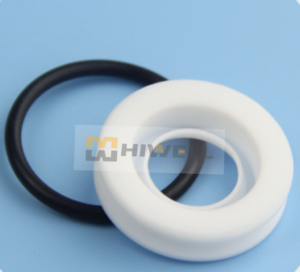When installing the seal, it is important to pay special attention to the following three points:
- Avoid damaging the sealing surface or lip of the seal.
The sealing performance of hydraulic seals relies on the contact surfaces with the housing or shaft. These components are made of delicate materials that are flexible, heat-resistant, corrosion-resistant, and aging-resistant, such as rubber, plastic, fiber, and graphite. Therefore, special care and maintenance are required during handling, installation, and storage to protect them from damage. Any damage to the seal poses a significant risk to its sealing function. - Do not force the seal during installation.
Some seals are placed in grooved packing boxes where they need to be tightly fitted. During installation, rough or aggressive actions should be avoided. Forcing the seal can disrupt its original preformed structure, similar to damaging precast concrete. Compromising the fill section will inevitably lead to catastrophic consequences. The installation of such seals requires extreme caution and a gradual embedding process. - Pay attention to the balance and symmetry of seal installation.
Position the seal in close proximity to the effective sealing surface (or lip line). After the system is opened and put into operation, further observation and tightening of the seal are necessary for ongoing maintenance, to prevent minor leaks that may occur due to variations in operating conditions (e.g., pressure changes) and avoid damage to the system.
These three points outline the important considerations during seal installation. It is crucial to adhere to these guidelines to ensure proper sealing performance.
Rate this post


